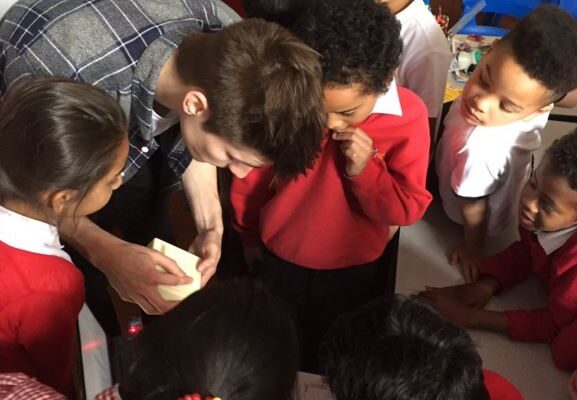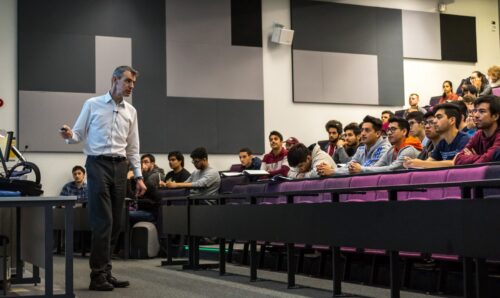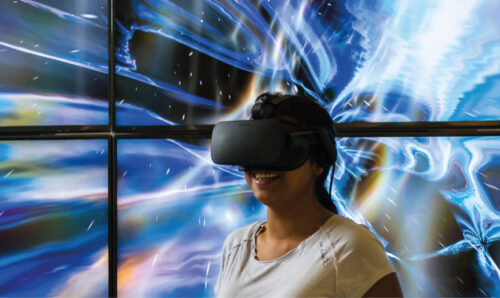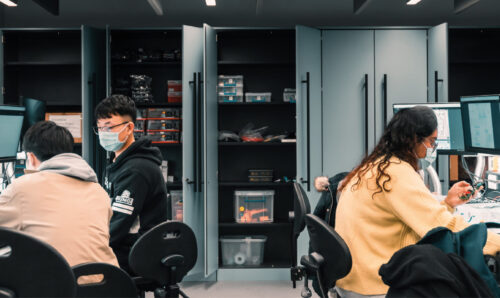Minecraft Teleportation Slave Robots
EEE in the real world Life in EEE Student experience 12 April 2016
An aim for the project has always been to eventually test the data logger in a real classroom. So this week I headed over Seymour Park Community Primary School to meet three Year 4 classes. There were two objectives of the visit, firstly I was challenged to inspire the children about engineering, before letting the test subjects loose with WILFRED the data logger.
I’M OUT
I have to say I was impressed with Year 4’s impression of engineering. They were well aware that engineers aren’t all car mechanics or men in hard hats, something I didn’t achieve until about Year 12. After speaking about what inspired me to be an engineer, the children had plenty of questions.
I asked one class what they’d build if they were engineers. This (unexpectedly) turned into a 20-minute episode of Dragon’s Den, whereby the class took it in turn to come up with more and more infeasible product ideas. Ongoing themes of Minecraft simulators, teleportation devices, or robot slaves dominated. The simplest is always the best, however, with one child proposing sunglasses in which the tinted lenses automatically fold down when it’s sunny. Not sure if I could see it catching on, but perhaps a style choice?
‘BAR OF SOAP’
The real reason why I was there, however, was to evaluate the success of the data logger. I was really impressed with the students’ knowledge of 3D printing, with the process of designing and constructing the device fascinating them. After letting them inspect the data logger up close, I pulled out the laptop receiving real-time sensor data from the data logger. The graph showing measured light levels caught their attention, and encouraging them to cover up the light sensor with their hand was met with ‘gasps’ as the graph measurements reduced significantly.
The ability to see the real-time data had the whole class completely engaged in the simple experiment. And this was reflected in the survey results which followed. Every student said they found the graphs on the computer interesting, and described it using words such as “clever”, “interesting”, and “cool”.
There was also some critical feedback received. One student claimed it looks like a bar of soap, while another suggested it could be improved if it was voice activated.
Overall though, 96% of the class said they’d like to use WILFRED in science lessons, a resounding result for the prototype. Furthermore, 80% said they’d ‘definitely’ find science more interesting if they were using WILFRED, which completely supports the motivation for this project. Only one student said she wouldn’t find science more interesting, who justified this at the time by saying it wasn’t possible for her to find science any more interesting than she already does!
The read-test was a resounding success, excellent feedback was received, and so I’m told the classes were left inspired and motivated. In the words of Mrs Loughran, “It had a huge impact on the children and they were very inspired. I even had some of them asking me where the books on engineering are in the library afterwards! So, they came away with their arms full of books about inventions and technology!”





Leave a Reply